

The Philippines is a tropical paradise with over 7,000 islands, offering some of the most breathtaking beaches in the world. The historical and cultural significance of these beaches is reflected in their unique architecture, such as the ancient structures found on Bantayan Island. These beaches also provide deep cultural and historical insights, adding meaning to their natural beauty and enhancing their appeal to visitors. If you’re planning a summer getaway, you’re in for a treat! Whether you want powdery white sand, crystal-clear waters, or a vibrant marine ecosystem, the Philippines has it all.
Here’s a list of the top beaches you must visit in the Philippines this summer!
Luzon, the largest island in the Philippines, is home to some of the country’s most breathtaking beaches. Whether you’re looking for powdery white sand, dramatic coastlines, or crystal-clear waters, Luzon has it all. Here are the best beaches in Luzon that you should visit this summer!
When it comes to dream beach destinations, Boracay Island always tops the list. Known for its powdery white sand, crystal-clear waters, and vibrant nightlife, Boracay is the ultimate summer getaway. Whether you’re looking for relaxation, adventure, or a lively party scene, this island has it all.
Here’s why Boracay is the best beach to visit in the Philippines this summer.
If you’re dreaming of the perfect summer getaway, Nacpan Beach in El Nido, Palawan, should be at the top of your list. With its pristine golden sand, crystal-clear waters, and tranquil atmosphere, Nacpan Beach offers an unforgettable escape from the hustle and bustle of daily life.
Here’s why Nacpan Beach is the best beach to visit in the Philippines this summer!
When it comes to summer getaways in the Philippines, Bantayan Island in Cebu is an underrated paradise that deserves a spot on your bucket list. With its pristine white sand beaches, crystal-clear waters, laid-back atmosphere, and stunning island views, it’s the perfect destination for a relaxing and unforgettable beach vacation. Historically, the island is known for its ‘bantayan sa hari,’ which were watchtowers built during the Spanish colonial period to protect against Moro pirate raids. The name ‘Bantayan’ is derived from the term ‘Bantayan sa Hari,’ which means ‘Watchtowers of the King.’
If you’re wondering why Bantayan Island is the best beach to visit this summer, here are the top reasons why you should pack your bags and experience this tropical haven!
Image Source: The Poor Traveler Itinerary Blog | The Drenched Humor of BANTAYAN ISLAND, CEBU | https://www.thepoortraveler.net/2013/07/bantayan-island-cebu-beaches-resorts-philippines/
If you’re looking for a secluded paradise with pristine sands, crystal-clear waters, and a relaxing atmosphere, Sugar Beach in Negros Occidental stands out as the best beach to visit this summer.
Located in Sipalay City, Sugar Beach is less crowded than popular destinations like Boracay or Palawan, making it perfect for travelers who want a peaceful escape.
Here’s why Sugar Beach should be on your must-visit list this summer.
Known as the “Surfing Capital of the Philippines,” this island in Surigao del Norte offers not just world-class waves but also stunning beaches, crystal-clear waters, hidden lagoons, and a laid-back island vibe. Whether you’re an adventure seeker, a beach lover, or someone looking for a peaceful getaway, Siargao has something for you.
Here’s why Siargao is the best beach destination in the Philippines this summer!
Yes, you read that right—a pink beach! Due to crushed red corals mixing with the white sand, Pink Beach in Great Santa Cruz Island has a unique blush-colored shore. It’s a rare sight and definitely worth the trip!
Here’s why Pink Beach in Zamboanga is the best beach to visit this summer!
If you’re looking for untouched beauty, check out these lesser-known beaches. The northern part of some of these beaches has historical significance, adding to their unique charm:
When planning your trip to Bantayan Island, understanding the weather patterns is crucial for an unforgettable beach experience. The island enjoys a tropical climate with two main seasons: dry and wet.
The dry season, spanning from December to May, is the ideal time to visit. During these months, the weather is sunny and dry, perfect for beach activities and outdoor adventures. If you’re planning to visit during the peak season, which is from December to January, it’s advisable to book your hotel in advance to secure your spot in this tropical paradise.
On the other hand, the wet season runs from June to November and is characterized by frequent rain showers and strong winds. While it’s not the best time for beach activities, you can still enjoy some outdoor adventures if you keep an eye on the weather forecast. Planning your trip with flexibility in mind can help you make the most of your visit, even during the rainy months.
Reaching Bantayan Island is a breeze with several transportation options available. Here’s a step-by-step guide to help you navigate your way to this stunning beach destination:
With these steps, you’ll be soaking up the sun on Bantayan’s pristine beaches in no time!
Bantayan Island offers a diverse range of accommodation options to suit every traveler’s needs, from luxurious resorts to charming beachfront cabins and budget-friendly stays.
Luxury Resorts: For those seeking a lavish experience, Anika Island Resort, La Playa Estrella Beach Resort, and Kota Beach Resort are top choices. These resorts offer stunning beachfront views, luxurious amenities, and exceptional service, ensuring a memorable stay.
Beachfront Cabins: If you prefer a more intimate and cozy setting, consider staying at Coucou Bar Hotel and Restaurant, Jelly’s Haven Resort, or Hoyoyoy Villas. These beachfront cabins provide a charming and relaxed atmosphere, perfect for unwinding by the sea.
Budget-Friendly Options: Travelers on a budget will find excellent options at Sunday Flower Hotel, Kandugyap House by the Sea, and Sandscape Hotel. These accommodations offer comfort and affordability without compromising on the island’s beautiful surroundings.
No matter your preference or budget, Bantayan Island has the perfect place for you to rest and rejuvenate after a day of exploring its stunning beaches.
Before heading to these amazing beaches, make sure to pack the essential items needed for a beach trip:





The Philippines is a tropical paradise filled with world-class beaches. Whether you love adventure, relaxation, or simply soaking up the sun, there’s a beach for you. This summer, plan your trip carefully to any of these breathtaking destinations and experience the magic of the Philippines firsthand!
Starting a business is one of the most thrilling and rewarding paths you can take, but the journey isn’t without risks. Statistics reveal that nearly 20% of small businesses fail within their first year, making it crucial to consider starting your own business, particularly in the rental industry, which can offer flexibility and control.
By focusing on opportunities with strong earning potential and reduced risks, you create a solid foundation for long-term success. These two critical factors not only help your business thrive but also make it more resilient to challenges. The key lies in choosing the right business model—one that aligns with your skills, market demand, and scalability. With the right approach, your efforts and investments can lead to sustainable growth and profitability, ensuring a more secure future.
Starting a business is not just about passion; it’s about ensuring your hard work pays off. Statistics show that around 20% of small businesses fail in their first year. To beat the odds, focus on ventures with the following characteristics: Profitable rental business ideas are a great example, offering lucrative opportunities within the rental industry for 2025.
Businesses that cater to growing markets have a higher chance of success. Think of industries like real estate, healthcare, and technology, which consistently show upward trends.
Minimizing expenses is crucial for maximizing profit margins. Businesses with low overhead costs—like professional services—are often more sustainable.
Industries such as healthcare and rental properties tend to thrive even during economic downturns. These businesses meet essential needs, ensuring steady demand. The house rental business, particularly in urban areas where rental costs exceed purchase prices, offers significant potential for profitability and expansion.
Businesses that can grow without substantial additional costs—such as tech-based companies—are ideal. Recurring revenue streams, like subscription models, also enhance profitability.
Identifying profitable business opportunities starts with a deep dive into industry analysis and market trends. This involves understanding the demand for specific products or services, evaluating the competition, and pinpointing your target audience. Staying abreast of the latest market trends and technological advancements is crucial for spotting opportunities for growth and innovation.
In the rental industry, for instance, the rise of the sharing economy has spurred a surge in demand for rental services. Consumers are increasingly seeking convenience and flexibility, driving the growth of this sector. The rental industry is poised for continued expansion, making it a fertile ground for entrepreneurial ventures.
Here are five business models proven to deliver strong returns while minimizing risks: rental business ideas.
Tech-based businesses, especially those offering Software as a Service (SaaS), are among the most scalable and profitable ventures. Entrepreneurs with a knack for technology can create software solutions that address specific market needs.
By focusing on innovation and customer-centric solutions, tech businesses can achieve remarkable growth and profitability.

Businesses offering professional services, such as accounting, consulting, and legal expertise, thrive due to their reliance on specialized knowledge. These services command premium pricing and require minimal operational costs.
For entrepreneurs with specialized skills, professional services provide an excellent opportunity to build a sustainable business.

The aging population has created a surge in demand for senior care services. From home care to assisted living placement, this industry offers a chance to make a meaningful impact while achieving financial success.
Operating in a recession-resistant industry, senior care businesses benefit from consistent growth and stability.
Rental properties are a reliable investment, providing both steady income and property appreciation over time. This dual benefit makes them a top choice for entrepreneurs seeking long-term wealth-building opportunities.
One lucrative example is the vacation rental business, which offers short-term leases to both leisure travelers and business professionals, especially in popular tourist and business districts.
With careful planning and management, rental properties can deliver high returns with minimal risk.

As cities grow and people need more space, self-storage facilities have emerged as a high-demand business. These facilities cater to both individuals and businesses, offering stable, year-round income. Additionally, the storage rental business presents a valuable passive income opportunity, allowing individuals to lease out storage space without the burden of managing equipment, while meeting the growing demand for storage solutions for furniture, clothing, and vehicles.
Self-storage facilities combine simplicity with profitability, making them an appealing option for entrepreneurs.
For OFWs, the goal is often to build financial security and create passive income streams that last for years. The best investments are those that offer stability, profitability, and scalability.
Rental properties stand out as one of the best investment options for OFWs. They provide a reliable income source while appreciating in value over time. Whether you’re renting out residential or commercial spaces, the potential for long-term wealth is immense.
Passive income is about earning money without active daily involvement. Rental businesses and self-storage facilities are excellent ways to achieve this. They require initial effort to set up but offer steady returns with minimal ongoing work.
While these business models offer high-profit potential, success depends on finding the right fit for your skills, interests, and market conditions. Here are some tips to help you decide:
Understand the needs of your target audience and identify opportunities within your chosen industry. Consider the demand for specific services, such as the bounce house rental business, which offers profitability and versatility as part of a broader party rental service.
Begin with a manageable investment and expand as your business gains traction. A bike rental business, for example, is a low-cost entry venture that can scale effectively, especially in urban areas and popular riding destinations.
Choose a business that aligns with your expertise or passion for a smoother path to success. For instance, a camera rental business can be a lucrative opportunity, especially with the strong demand for high-quality photography needs among travelers and amateur filmmakers.
Investing in real estate through Vistaland International is a smart move for those looking to start a profitable rental business. With properties strategically located in prime areas, Vistaland offers excellent opportunities to generate passive income. Owning a rental property here not only provides a steady income stream but also ensures long-term value appreciation, making it an ideal choice for those asking, “What is the best investment for OFW?” Whether you’re a beginner exploring the best investment in the Philippines or an experienced investor, Vistaland’s properties offer the perfect balance of security, convenience, and high-earning potential.
Take the first step toward financial independence by owning a property that works for you. Additionally, the car rental business is another lucrative opportunity, especially in travel-heavy regions or areas with low car ownership.
Choosing a high-profit, low-failure business model is one of the smartest moves you can make as an entrepreneur. These businesses offer financial stability and align with market trends, ensuring long-term profitability and growth. By focusing on strategic planning and careful execution, you can transform your business idea into a thriving venture.
Whether you’re interested in tech, professional services, rental properties, or self-storage, the key is to take the first step. With research, preparation, and determination, success is within your reach.
Millennials and Gen Z are more than just buzzwords. These two generations are redefining how businesses operate, from workplace dynamics to customer engagement strategies. Together, they make up a significant portion of the global population and wield incredible influence. If you want your business to thrive, understanding and harnessing the potential of Millennials and Gen Z is essential.
Why? Because they’re not just the workforce of the future—they’re the workforce of today. They bring fresh perspectives, digital prowess, and a deep sense of purpose to the table, making them indispensable assets to any forward-thinking organization. Unlike Baby Boomers, who valued job stability and long-term employment, Millennials and Gen Z prioritize flexibility, innovation, and work-life balance, leading to a transformative impact on business operations and workforce dynamics.
Millennials, also known as Generation Y, were born between 1981 and 1996. They came of age during the rise of the internet and witnessed the transition from traditional to digital lifestyles. Known for their adaptability and collaborative spirit, Millennials are often driven by a desire for meaningful work and personal growth.
Generation Alpha, the cohort following Generation Z, is emerging as a significant demographic, highlighting the importance of understanding generational transitions.
Generation Z, born roughly between 1997 and 2012, are true digital natives. Various sources describe Americans born during this period as those who have unique characteristics shaped by the digital age. They’ve grown up in a world dominated by smartphones, social media, and instant connectivity. Unlike Millennials, Gen Z places even greater emphasis on authenticity, social impact, and innovation. They value diversity and are vocal advocates for change.
The millennial generation, which came of age during the Great Recession, has distinct experiences compared to Gen Z. While both generations are tech-savvy, their approaches differ. Millennials tend to use technology as a tool for convenience, while Gen Zs see it as an integral part of their identity. Additionally, Gen Zs prioritize quick, visual communication, such as emojis and TikTok videos, over Millennials’ preference for longer-form content.
Understanding the unique attributes of millennials and Gen Z isn’t just interesting—it’s essential. Businesses, communities, and leaders must recognize these strengths to unlock the potential of these two transformative generations. Gen Z is more racially and ethnically diverse, better educated, and generally more socially conscious than previous generations.
Millennials and Gen Z are masters of the digital realm. From automating tasks to leveraging data analytics, they’re adept at using technology to solve problems efficiently. Their digital-first mindset allows businesses to stay ahead in a rapidly evolving tech landscape. Generation Z, in particular, has been exposed to digital technology from a young age, shaping their behaviors and societal engagement.
These generations value inclusivity, making them catalysts for positive cultural change. Their commitment to diversity ensures that businesses become more equitable and innovative, as varied perspectives lead to better decision-making.
Additionally, young women play a crucial role in political and social movements, often leading the charge on issues such as immigration and sexual harassment.
Millennials and Gen Z are purpose-driven. They want to work for companies that align with their values, whether it’s sustainability, ethical business practices, or community engagement. Businesses that embody these principles not only attract top talent but also foster customer loyalty.
Millennials and Gen Zs are transforming the workforce like never before. With their fresh perspectives, tech-savviness, and a deep commitment to purpose and inclusivity, these generations are redefining what it means to succeed at work. From championing work-life balance to driving innovation, their unique strengths are reshaping industries and creating dynamic, future-ready workplaces. But how exactly are they making their mark? Let’s explore their pivotal role in shaping the workforce of today and tomorrow. Unlike the previous generation, Gen Z is more progressive and digitally connected, diverging significantly in areas such as social media usage and educational engagement.
Diverse teams that include Millennials and Gen Zs bring a mix of creativity, adaptability, and tech-savviness. They complement older generations with fresh perspectives and innovative solutions.
Comparing the experiences of different generational cohorts, individuals of the same age within the 18 to 24 group show distinct differences in their approach to work and technology compared to slightly older groups, highlighting the evolving dynamics in a multigenerational workforce.
These generations push boundaries. They champion emerging technologies, demand better user experiences, and inspire businesses to think outside the box. More than half of Gen Z members in the U.S. are enrolled in higher education, emphasizing their commitment to education and future economic stability.
It’s no secret that integrating different generations can be challenging. Businesses must focus on open communication, mentorship programs, and creating a culture where all voices are heard. About a quarter of Generation Z spends virtually nothing on luxuries, and about a quarter of registered Gen Z voters expressed approval of Donald Trump’s presidential performance.
The future of work is being redefined by Generation Z, the most diverse generation in history. This new generation is bringing a fresh approach to the workforce, prioritizing diversity, equity, and inclusion like never before. According to the Pew Research Center, a staggering 70% of Gen Zers believe that diversity is essential for a company’s success. Moreover, 60% of them are more inclined to work for companies that value diversity, making it clear that inclusivity is not just a preference but a necessity for attracting top talent.
As the gig economy continues to expand, Gen Z is poised to lead this trend. A Gallup survey reveals that 43% of Gen Zers prefer remote work, and 53% are open to freelancing or working as independent contractors. This shift towards flexible work arrangements underscores their desire for autonomy and a better work-life balance, which businesses must accommodate to stay competitive.
Technological advancements are another cornerstone of the future of work, with Gen Z being the first generation to grow up with artificial intelligence, blockchain, and the Internet of Things (IoT). According to Deloitte, 60% of Gen Zers believe that AI will positively impact their careers, and 55% are excited about blockchain’s potential to revolutionize industries.
However, the future of work also presents challenges. The World Economic Forum reports that 75% of Gen Zers are concerned about automation’s impact on their jobs, and 60% worry about the lack of skills training and development opportunities. To address these concerns, employers must invest in comprehensive training and development programs to prepare Gen Z for the evolving job market.
Millennials and Gen Zs bring fresh perspectives, tech-savviness, and a passion for innovation that can transform your business. Their unique strengths and values-driven approach make them essential for staying competitive and future-ready in today’s fast-paced market. Additionally, young adults in these generations often face distinct socio-economic challenges, which shape their consumer behavior and workplace expectations.
Millennials and Gen Z grew up with technology at their fingertips. They bring a wealth of knowledge about emerging tools and trends, which is crucial in today’s digital economy. From optimizing workflows to creating viral marketing campaigns, their expertise is invaluable.
The world is changing fast, and these generations know how to keep up. They’ve navigated economic recessions, global pandemics, and technological revolutions. Their ability to adapt and thrive under pressure makes them reliable in uncertain times.
Millennials and Gen Z question traditional ways of doing business. They’re not afraid to challenge outdated practices and propose bold, innovative solutions. This mindset fosters creativity and drives progress.
These generations understand the power of authenticity. Whether they’re engaging with customers on social media or collaborating with colleagues, they prioritize genuine connections. Their approach humanizes brands and builds trust.
Millennials and Gen Z are change-makers. They advocate for causes like sustainability, mental health awareness, and social justice. Businesses that embrace these values not only help create a better world but also connect with mindful consumers.
Generation Z is not just reshaping the workforce; they are also revolutionizing consumer behavior. This new generation’s unique values and preferences are compelling companies to rethink their marketing and sales strategies. According to the Pew Research Center, 70% of Gen Zers are more likely to buy from companies that share their values, and 60% are willing to pay a premium for sustainable and environmentally friendly products.
Online shopping is another area where Gen Z is making a significant impact. A whopping 60% of Gen Zers prefer shopping online over in-store experiences. The National Retail Federation projects that Gen Z will spend $143 billion online by 2025, making them a critical demographic for retailers to target.
However, reaching Gen Z is not without its challenges. This generation is known for their skepticism towards advertising, with 60% of them distrusting online ads. To effectively engage Gen Z, companies need to adopt more authentic and transparent marketing strategies. Leveraging social media influencers and user-generated content can help build trust and credibility, resonating more with this discerning audience.
By understanding and adapting to the unique preferences of Generation Z, businesses can not only capture their attention but also earn their loyalty, ensuring long-term success in a rapidly changing market.
Engaging Millennials and Gen Z in your business requires understanding their values, preferences, and unique strengths. By fostering inclusivity, leveraging technology, and aligning with their purpose-driven mindset, you can build meaningful connections and drive long-term success.
Encourage teamwork and create spaces where ideas can flow freely. Open communication and collaborative tools make the workplace more inclusive and productive.
Provide opportunities for growth, such as workshops, mentorship programs, and online courses. Millennials and Gen Z value continuous learning and will thrive when they see a clear path for advancement.
Establish a two-way feedback system. By listening to their ideas and concerns, you create a culture of mutual respect and innovation.
Millennials and Gen Z are not just employees; they’re innovators, advocates, and leaders. Their unique strengths make them indispensable to businesses that aim to succeed in a rapidly changing world. By embracing their perspectives and values, you’ll not only future-proof your organization but also create a positive, impactful legacy.
The Philippines is a treasure trove of natural wonders, boasting over 7,600 islands surrounded by crystal-clear waters and pristine beach destinations. It’s a paradise that offers something for every beach lover, whether you’re seeking adventure, relaxation, or a romantic getaway.
El Nido is a dream destination known for being one of the best beaches, with its towering limestone cliffs, turquoise lagoons, and powdery white sand. It’s perfect for kayaking, snorkeling, and unwinding in a serene environment.
El Nido, located in the northern part of Palawan, Philippines, is a tropical paradise renowned for its dramatic limestone cliffs, crystal-clear waters, and stunning lagoons. Known for its breathtaking natural beauty, El Nido is home to some of the most beautiful beaches and islands in the world, including the iconic Big Lagoon and Small Lagoon. Visitors can explore the vibrant marine life through snorkeling and diving, or enjoy island-hopping adventures to secluded beaches and hidden caves. With its serene atmosphere, El Nido offers a perfect escape for nature lovers, adventure seekers, and those looking to unwind in a pristine environment.
Pagudpud, located in the northernmost part of Ilocos Norte, is a breathtaking coastal town in the Philippines known for its pristine white sand beaches, crystal-clear waters, and stunning natural landscapes. It is famous for its idyllic beaches like Saud Beach, where visitors can relax under the sun, swim in the turquoise waters, or engage in water sports. Pagudpud is also home to picturesque waterfalls such as the Kabigan and Tappiya Falls, offering both relaxation and adventure. The town is an ideal destination for those seeking a peaceful escape, with its laid-back atmosphere and scenic beauty making it a perfect spot for nature lovers and beachgoers.
Anawangin Cove, located in the province of Zambales, Philippines, is a hidden gem known for its picturesque beauty and tranquil atmosphere. The cove is famous for its unique landscape, with towering pine trees lining the shore, which contrasts with the typical palm trees found on most Philippine beaches. The clear waters and sandy shores make it a popular spot for swimming, camping, and hiking. Accessible by boat, Anawangin Cove is a perfect getaway for nature lovers and adventurers looking to disconnect from the hustle and bustle of city life. Its serene environment and stunning views make it a must-visit destination for those seeking peace and natural beauty.
Boracay Island, located in the Visayas region of the Philippines, is one of the country’s most famous and beautiful destinations. Boracay is known for its pristine white sand beaches and crystal-clear turquoise waters, making it an ideal destination for both relaxation and adventure. The island is a haven for water sports enthusiasts, offering activities such as kite surfing, paddle boarding, and snorkeling. With vibrant nightlife, world-class resorts, and a variety of restaurants, Boracay has something for every type of traveler. Despite its popularity, Boracay has made efforts to promote sustainable tourism, ensuring that its natural beauty is preserved for future generations.
Bantayan Island is the epitome of tranquility, featuring the secluded and picturesque Paradise Beach with its crystal-clear waters and laid-back atmosphere. It’s ideal for couples and families looking for a peaceful getaway.
Known for its long sandbars, Kalanggaman Island offers a unique beach getaway experience. Its untouched beauty is perfect for day trips and photography.
Alona Beach in Bohol Island is a 1.5-kilometer stretch of soft white sand and clear, tranquil waters. Bohol Island is an excellent destination for families, featuring numerous highly-rated resorts along the coast that combine luxury with comfort. While the bustling beachfront offers a variety of dining and leisure options, the serene seas are perfect for swimming and other water sports. In addition to enjoying the shoreline, visitors can partake in thrilling activities such as banana boat rides, UFO rides, and parasailing. The beach is lined with palm trees, providing a picturesque backdrop for a relaxing getaway.
Dahican Beach is a hidden paradise for surfers and skimboarders. Its crescent-shaped coastline and powerful waves attract thrill-seekers from around the world.
Samal Island offers diverse attractions, from lush gardens to pristine beaches. It’s a haven for snorkeling enthusiasts and a great spot for dolphin watching.
Pink Beach in Zamboanga, located on the beautiful island of Sta. Cruz, is a stunning natural wonder famous for its unique pink-hued sand. The beach gets its distinctive color from the combination of white sand and crushed red coral particles, creating a soft, blush-toned shoreline. The crystal-clear waters surrounding the beach are perfect for swimming, snorkeling, and diving, offering a vibrant underwater world teeming with marine life. Pink Beach is an off-the-beaten-path destination, making it a peaceful and serene spot for those looking to enjoy nature’s beauty away from the crowds.
Siargao is a popular destination for surfers, with a range of breaks and a lively atmosphere. The island offers a range of activities, including surfing, snorkeling, and diving. General Luna is a popular destination for surfers, with a range of amenities and activities. Pacifico Beach is a picturesque beach with a range of amenities, including restaurants and shops. Siargao is a great destination for those looking for an active and adventurous vacation. The island is also home to a range of beautiful beaches, including those with white sand and turquoise waters.
Tucked away in the northernmost reaches of the Philippines lies Palaui Island, a hidden gem known for its pristine beauty and unspoiled landscapes. This secluded paradise is a perfect blend of lush greenery, turquoise waters, and rugged terrain that captivates adventurers and nature lovers alike.
Palaui boasts some of the most stunning beaches in the Philippines, with white sands and crystal-clear waters perfect for relaxation and recreation. Notable spots include Anguib Beach and Siwangag Cove. The island is also a sanctuary for diverse wildlife and plant species, making it a haven for biodiversity enthusiasts. Its forests and coral reefs teem with life, creating a vibrant ecosystem.
Calaguas Island in Camarines Norte is a tropical paradise known for its powdery white sand beaches, crystal-clear waters, and serene ambiance. Nestled off the coast of Bicol, this unspoiled destination offers a perfect escape for those seeking tranquility and natural beauty. Whether you’re lounging on Mahabang Buhangin beach, exploring hidden coves, or enjoying vibrant sunsets, Calaguas Island promises an unforgettable retreat, far from the hustle and bustle of city life. Its raw charm and pristine environment make it a must-visit gem in the Philippines.
Siquijor Island, located in the Central Visayas region of the Philippines, is a serene paradise known for its mystical charm and natural beauty. Often referred to as the “Island of Fire,” Siquijor is famous for its lush forests, pristine beaches, and cascading waterfalls. The island is steeped in local folklore, with many believing in its mystical healing practices. Visitors can explore its peaceful villages, enjoy diving in crystal-clear waters, or hike through scenic trails. With its laid-back atmosphere and enchanting landscapes, Siquijor offers a unique and tranquil experience for those seeking an escape from the ordinary.
Discover vibrant marine life and colorful coral reefs while exploring the underwater wonders of the Philippines.
Take a boat ride to explore hidden coves, secret beaches, and stunning lagoons.
Unwind with the soothing sound of waves, breathtaking views, and the chance to encounter sea turtles in their natural habitats.
The Philippines is a haven for beach lovers, offering diverse landscapes, thrilling adventures, and serene retreats. With so many stunning beaches to choose from, 2025 is the perfect year to explore this tropical paradise.
The Philippines is a tropical paradise boasting over 7,600 islands, each with its unique charm. With a mix of stunning natural beauty, vibrant culture, and warm hospitality, the Philippines has earned its place among the world’s top travel destinations. The Central Visayas region, including popular destinations like Bohol and Cebu, is a key area for tourism, known for its unique attractions, cultural heritage, and beautiful landscapes. If you’re planning a trip in 2025, you’re in for an adventure filled with unforgettable experiences.
The Philippines is a tropical paradise with over 7,000 islands to explore. Located in Southeast Asia, the country offers a unique blend of nature, vibrant culture, and thrilling activities. From pristine beaches and idyllic islands to world-class surfing spots and UNESCO World Heritage Sites, the Philippines is a treasure trove of top tourist spots. The country’s rich history and culture are reflected in its well-preserved Spanish colonial architecture, while its diverse range of flora and fauna makes it a haven for nature lovers.
Manila is the gateway to the Philippines, offering a mix of historical landmarks like Intramuros and modern attractions such as high-end malls and a lively nightlife. Don’t miss visiting Rizal Park, dedicated to Dr. Jose Rizal, the country’s national hero, exploring Manila Bay, or experiencing the local cuisine in Binondo, the world’s oldest Chinatown.
Just a short drive from Manila, Tagaytay provides a tranquil retreat with breathtaking views of Taal Volcano. Enjoy the cool climate and treat yourself to local delicacies like Bulalo and fresh buko pie.
Known for its cooler weather, Baguio is the perfect escape from the tropical heat. Visit Burnham Park, explore Camp John Hay, and pick fresh strawberries at the local farms.
Cebu Island, an island province in the Central Visayas region, is a hub of culture and history. Visit Magellan’s Cross and Fort San Pedro, then head to its pristine beaches for snorkeling and island hopping. Kawasan Falls and the sardine run in Moalboal are must-sees.
Bohol is home to the iconic Chocolate Hills and the adorable tarsiers. Tagbilaran, the capital city of Bohol, holds historical and administrative significance, serving as a vital hub for economic and cultural activities. Panglao Island is perfect for diving enthusiasts, offering vibrant coral reefs and crystal-clear waters.
Famous for its powdery white sand, Boracay’s White Beach is a postcard-perfect destination. Engage in thrilling water sports or unwind with a sunset cocktail.
Davao is a blend of urban and natural attractions. Visit the Philippine Eagle Center, hike Mount Apo, and savor the exotic durian fruit.
Known for its world-class surfing spots, Siargao is a haven for surfers and nature lovers alike. Cloud 9 offers waves for pros and beginners, while hidden lagoons and mangroves add to the island’s charm.
Palawan consistently tops travel bucket lists. El Nido and Coron are known for their dramatic limestone cliffs and turquoise lagoons. Don’t miss the Underground River, a UNESCO World Heritage Site.
This small island is packed with natural wonders, from hot springs to waterfalls. Trek up Mount Hibok-Hibok or relax by the Sunken Cemetery for an unforgettable experience.
Step into a different era in Vigan, where Spanish colonial architecture lines cobblestone streets. The preserved heritage of this UNESCO site makes it a must-visit.
The Philippines is home to a plethora of historical sites that showcase its rich cultural heritage. One of the most famous historical sites is the Intramuros old town in Manila City, a UNESCO World Heritage Site and a must-visit destination for history buffs. The city is a great spot for photography, with its historic landmarks and picturesque scenery. Visitors can take a sightseeing tour of the city, including a calesa ride and a visit to the Manila Cathedral.
Another historical site worth visiting is the Magellan’s Cross in Cebu City, a symbol of the country’s rich history and cultural heritage. The cross is a popular tourist destination and a great spot for photography. Visitors can also explore the nearby Basilica del Santo Niño, a historic church that dates back to the 16th century.
The Philippines is also home to several historical landmarks that date back to World War II, including the Corregidor Island in Manila Bay and the Leyte Landing Memorial in Palo, Leyte. These sites offer a glimpse into the country’s rich history and are a must-visit for history enthusiasts.
In addition to its historical sites, the Philippines is also known for its beautiful beaches and islands. Boracay Island, with its white sandy beaches and crystal-clear waters, is a popular destination for tourists. The island is a great spot for swimming, snorkeling, and diving, with numerous marine sanctuaries and protected areas.
Palawan Island, with its towering limestone cliffs and pristine beaches, is another popular destination for tourists. The island is home to the famous Puerto Princesa Underground River, a UNESCO World Heritage Site and one of the New 7 Wonders of the World. Visitors can take a boat tour to explore the river and its surrounding waters, which are home to a diverse range of flora and fauna.
Bohol Island, with its chocolate hills and pristine beaches, is another popular destination for tourists. The island is a great spot for swimming, snorkeling, and diving, with numerous marine sanctuaries and protected areas. Visitors can also explore the nearby town of Tagbilaran, which is known for its rich history and cultural heritage.
Overall, the Philippines is a country with a rich history and culture, beautiful beaches and islands, and a diverse range of flora and fauna. Whether you’re a history enthusiast, a nature lover, or just seeking for a relaxed vacation, the Philippines has something for you.
Explore vibrant underwater ecosystems at Tubbataha Reef and Apo Island, renowned for their biodiversity. Mactan Island is also a notable diving spot with historical significance due to the Battle of Mactan.
Take on Mount Pulag, the Philippines’ third-highest peak, or trek through the Batad Rice Terraces, a UNESCO site showcasing stunning engineering by ancient Filipinos.
Experience the energy of the Sinulog Festival in Cebu or the Ati-Atihan Festival in Kalibo, where music, dancing, and vibrant costumes celebrate Filipino culture.
From lush mountains to serene beaches, the Philippines offers something for every traveler. 2025 is the perfect year to explore this enchanting destination and uncover its treasures.
Taiwan has solidified its place as a top travel destination for its incredible cuisine, vibrant culture, and stunning landmarks. With the recent renewal of the “visa-free entry” program for Philippine passport holders until July 2025, Filipinos can enjoy visa exempt entry, bypassing the hassle of applying for a visa and diving straight into Taiwan’s endless adventures.
Whether you’re captivated by food, fascinated by culture, or inspired by architecture, Taiwan offers experiences that appeal to every traveler’s sense of delight. Here’s a closer look at some must-try activities and destinations to add to your itinerary.
Filipino citizens are eligible for visa-free travel to Taiwan until July 31, 2025. To take advantage of this hassle-free entry, travelers need to ensure they meet a few simple requirements. First, you must hold a valid Philippine passport with at least six months’ validity from the date of entry. Additionally, you should have a return or onward ticket, sufficient funds for your stay (approximately NT$10,000 or PHP 17,000), and a confirmed hotel reservation or proof of accommodation. Don’t forget to have a valid email address and phone number handy, as these are also required.
Once you’ve met the eligibility criteria, you can enjoy up to 14 days of visa-free travel in Taiwan. If you find yourself wanting to extend your stay beyond this period, you’ll need to apply for a visa at the Taipei Economic and Cultural Office in Manila. This ensures you can continue your Taiwanese adventure without any interruptions.
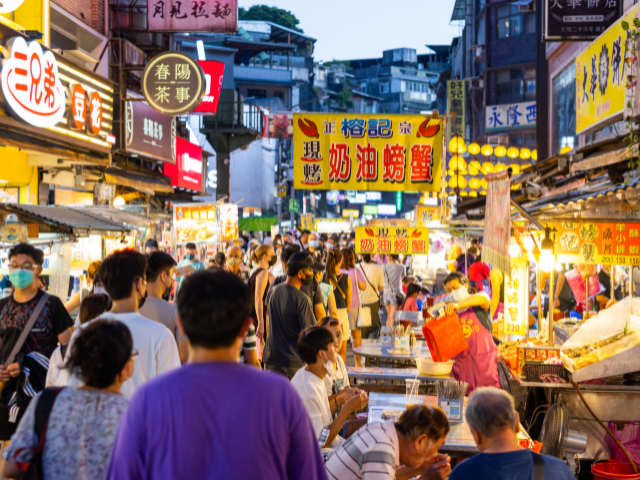
Getting to Taiwan is a breeze with several airlines offering direct flights from the Philippines to Taipei. Philippine Airlines, EVA Air, and China Airlines all operate multiple daily flights from Manila (MNL), Cebu (CEB), and Clark – Pampanga (CRK) to Taipei (TPE). The flight duration is a short and sweet two hours, making it easy to plan a quick getaway or an extended vacation. For added convenience, you can book your flights, hotel stays, and attraction tickets through travel platforms like Traveloka, ensuring a smooth and hassle-free travel experience.
Start your journey at the world-renowned Taipei 101. This architectural marvel, once the tallest building in the world, towers 400 meters above sea level. Ride one of the fastest elevators on the planet to the 89th-floor Sky Lounge, where you’ll enjoy breathtaking panoramic views of Taipei and even catch glimpses of mainland China. A visit here is a must for first-time travelers.
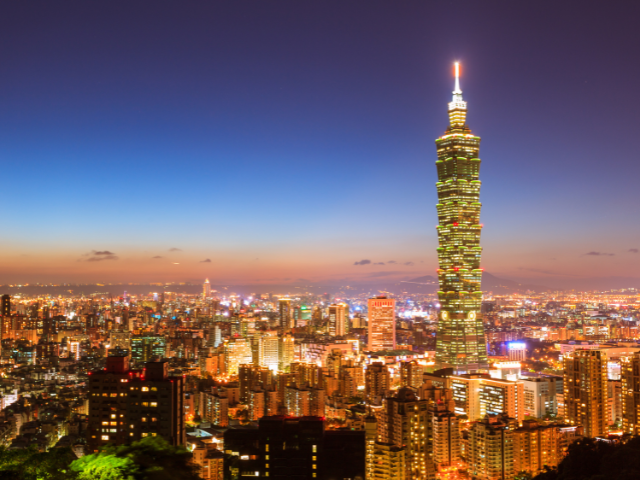
For a mix of adrenaline-pumping rides and family-friendly activities, head to Leofoo Village Theme Park in Hsinchu. As Taiwan’s largest safari and amusement park, it features over 30 exciting attractions and an expansive wild animal zoo. From musical water shows to colorful parades and energetic dance performances, this park has something for every member of the family.
Traveling with kids? The Taiwan Railway Formosa Express Disney-Themed Train is perfect for families. This unique transit experience includes 360-degree rotating seats, food, drinks, karaoke, and engaging onboard activities. With its lively Disney-inspired decor, the train ensures every mile of your journey is filled with fun and comfort.
The “Yehliu Geopark, Jiufen, Shifen, and Golden Waterfall Day Tour” offers the perfect way to explore Northern Taiwan in a single day, packed with unforgettable Taiwanese experiences.
The adventure begins at Yehliu Geopark, where you can marvel at fascinating natural rock formations. Next, stroll through the charming Jiufen Old Street, famous for its cultural teahouses and breathtaking coastal views. Continue to Shifen Old Street in Pingxi, where you can release a sky lantern to send your wishes skyward. The day wraps up with a visit to the magnificent Golden Waterfall, a stunning natural wonder that will leave you in awe.
A fantastic option for individuals who are fascinated to explore Central Taiwan is the “Taichung: Classic Attractions & Gaomei Wetlands One-Day Tour” that leaves Taipei. Southwestern Taiwan, known for its historical significance in agriculture and early Chinese settlement, also offers a rich cultural experience.
This tour highlights four iconic Taichung destinations. Begin with the vibrant Rainbow Village, where every wall tells a heartwarming story through colorful murals. Next, immerse yourself in the beauty of the Zhongshe Flower Market, a sea of blooming flora perfect for photos. Unwind at the Gaomei Wetlands, a serene mudflat offering some of the most picturesque sunset views. Finally, the tour concludes at Miyahara, where you can admire whimsical Harry Potter-inspired decor while indulging in Dawn Cake’s famous bubble tea, pastries, and other delightful treats.

Image Source: ShueiNanDong Golden Waterfall | https://newtaipei.travel/en/attractions/detail/111577
Treat yourself to a luxurious dining experience at A Joy: Taipei 101 Sky Buffet, offering over 300 dishes crafted from premium ingredients. Spanning eight dining zones, this buffet combines exquisite flavors with unparalleled views of the city skyline. It’s the perfect way to unwind after a day of exploring.
Maximizing Taiwan’s visa-free offer is all about planning and exploring. From its bustling cities to its serene nature spots, Taiwan has something for every traveler. So, pack your bags, grab your passport, and start your adventure in one of Asia’s most dynamic destinations.
The holidays are a time for celebration, indulgence, and joy. But once they’re over, you may feel physically drained and mentally overwhelmed. If you’ve had your fill of rich meals, late nights, and non-stop socializing, it’s time to hit the reset button. Let’s explore simple yet effective steps to cleanse your body and mind and start the new year feeling rejuvenated. Incorporating a balanced diet can help rejuvenate both your body and mind, supporting your natural detoxification processes and promoting overall well-being.
Effects of Holiday Indulgence on the Body
Holiday treats, alcoholic beverages, and heavy meals can lead to bloating, fatigue, and an overall sluggish feeling. A full-body detox can help after such indulgence by supporting the body’s natural detoxification processes. Your body may struggle to process excess sugar, salt, and unhealthy fats.
Mental Fatigue and Stress During Holidays
The holidays are as mentally taxing as they are joyous. Managing family gatherings, shopping lists, and travel schedules can leave you feeling frazzled. The body has natural processes for eliminating toxins, and a cleanse can help support this, restoring balance to your mental state.
Setting Realistic Goals
Don’t aim for perfection overnight. Decide what areas you want to focus on—physical energy, mental clarity, or both—and set achievable goals.
Creating a Personalized Detox Plan
Tailor your cleanse to your preferences. Love smoothies? Incorporate them. Enjoy yoga? Add it to your routine. Adopting healthy eating habits is also crucial as part of a holistic approach to detoxification. A personalized approach increases the likelihood of sticking with it.

Hydrate, Hydrate, Hydrate
Water is your body’s best friend during a detox. It helps flush out toxins, supports digestion, and boosts energy. The body can naturally detoxify through proper hydration, which aids in the elimination of toxins. Begin your day with a glass of warm water and lemon to boost your metabolism. Herbal teas, like green tea or chamomile, are also great alternatives.
Embrace Whole Foods
Ditch processed and sugary foods in favor of nutrient-dense options like fruits, vegetables, whole grains, and lean proteins. Detox diets are often marketed for their benefits, but they may pose risks and are not always necessary due to the body’s natural detoxification processes. Avoid alcohol, caffeine, and fried foods, as they can burden your digestive system. Limiting processed foods is crucial for supporting overall health and detoxification.
Move Your Body
Exercise not only burns off holiday calories but also helps rid your body of toxins. Even a brisk walk or gentle yoga session can work wonders. Focus on movements that you enjoy to stay motivated.
Prioritize Restful Sleep
Sleep is when your body repairs itself. Aim for 7-8 hours of quality sleep each night. Create a bedtime routine that includes relaxing activities like reading or meditation to improve your sleep hygiene.
Practice Mindfulness and Meditation
Meditation clears mental clutter and helps you stay present. Just 10 minutes a day can make a difference. Try focusing on your breath or using a guided meditation app.
Unplug from Technology
Constant notifications and screen time can drain your mental energy. Dedicate time each day to disconnect from your devices. Consider setting boundaries, like no phones during meals or after 8 PM.
Journal Your Thoughts
Journaling is a therapeutic way to process your thoughts and emotions. Start with simple prompts like “What am I grateful for today?” or “What’s one thing I want to let go of?”

Activities That Benefit Both
Outdoor activities, such as hiking or gardening, provide physical exercise while calming your mind. These activities offer numerous health benefits, including improved cardiovascular health and reduced stress levels. Dancing, tai chi, and swimming are other great options.
The Role of Nature and Outdoor Activities
Spending time in nature is a powerful way to recharge. Fresh air, greenery, and sunlight can boost both your mood and physical health.
Building Sustainable Habits
The key to a successful cleanse is making lasting changes. Avoiding harmful toxins is crucial for long-term health. Incorporate small, consistent habits like drinking more water, eating more vegetables, and meditating daily. Emphasize the importance of sustainable eating habits to ensure these changes are effective and long-lasting.
Gradual Transition Back to Regular Life
As you finish your cleanse, avoid jumping straight into old habits. Instead, maintain a balance between indulgence and wellness.
The holidays often leave us with bloated stomachs and sluggish digestion thanks to overindulgence in heavy meals, sugary treats, and festive cocktails. A detox diet can be an effective way to cleanse your system and improve overall wellness. If your gut needs a reset, detox drinks can be an excellent way to jumpstart the process. Detox diets are often marketed for their benefits, such as eliminating toxins and promoting weight loss, but it’s important to be aware of the potential risks and the lack of scientific support for their effectiveness. These beverages are packed with ingredients that aid digestion, reduce inflammation, and restore balance to your gut.
Here’s a list of effective detox drinks that you can easily prepare at home.
Lemon and ginger water is a classic detox drink known for its digestion-boosting properties.
Apple cider vinegar (ACV) is a probiotic-rich powerhouse that supports a healthy gut microbiome.
A green smoothie is a nutrient-dense way to reset your gut and energize your body.
This soothing drink is not just a treat for your taste buds but also a powerful anti-inflammatory remedy.
Aloe vera juice is a gentle and hydrating drink that soothes the digestive tract.
This refreshing drink hydrates and soothes your digestive system.
Rich in fiber and antioxidants, this drink is a great way to improve gut health.
Activated charcoal helps absorb toxins and flushes them out of your system.
This tropical drink combines hydration with gut-soothing enzymes.
This herbal tea is a gentle way to cleanse your liver and support digestion.
Detox drinks are a simple yet effective way to reset your gut after holiday indulgence. They not only help flush out toxins but also provide essential nutrients that aid digestion and promote gut health. Incorporate one or two of these drinks into your daily routine to feel refreshed and revitalized.
Cleansing your body and mind after the holidays is about more than just shedding extra weight or stress—it’s about giving yourself the care you deserve. By following these simple steps, you can refresh, recharge, and step into the new year feeling your absolute best. Remember, small changes add up, so start with one or two habits and build from there.
Are you looking for ways to create a more peaceful and prosperous home in 2025? Feng Shui, an ancient Chinese practice, offers timeless principles to harmonize your living space with nature’s energy forces. By applying Feng Shui tips, you can enhance not only the aesthetics of your home but also the flow of positive energy (or “chi”) that supports well-being and abundance.
Let’s dive into 10 actionable Feng Shui tips to transform your home into a haven of peace and prosperity.
Feng Shui is an ancient Chinese philosophy that seeks to balance and harmonize the energies in a given space, such as a home or office, to improve the health, happiness, and fortune of its occupants. The practice of Feng Shui is based on the idea that the physical environment around us affects our well-being and that by arranging and orienting buildings, objects, and structures in a specific way, we can improve the flow of energy, or “chi,” and create a more supportive and nourishing environment.
Feng Shui is a complex system that takes into account various factors, including the layout of a space, the location of doors and windows, the placement of furniture and objects, and the use of colors and materials. It is based on the idea that everything in the universe is connected and that the physical environment is a reflection of the spiritual and emotional state of its occupants. By analyzing and adjusting the physical environment, Feng Shui practitioners aim to create a more balanced and harmonious space that supports the well-being and success of its occupants.
Clutter is like a traffic jam for energy—it blocks the free flow of positivity in your home. By removing unnecessary items, you’re essentially creating space for fresh opportunities and good vibes.
The entryway is the first impression of your home’s energy flow.
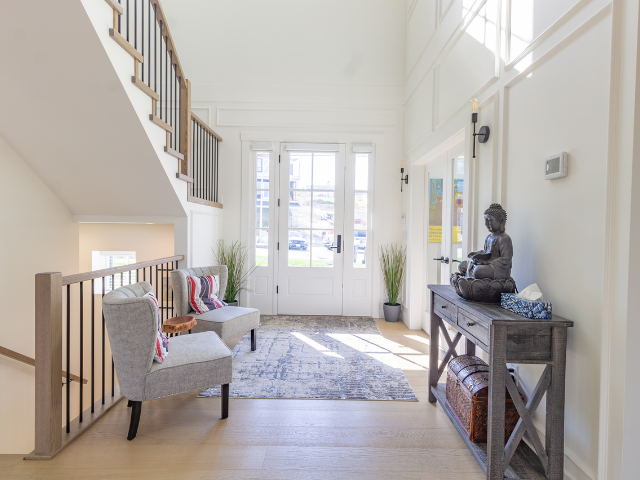
The Bagua map splits your home into nine areas, each linked to a specific aspect of life, such as wealth, health, or relationships.
Once you’ve identified the wealth corner, enhance it for prosperity.
Colors influence mood and energy. In 2025, trends lean toward earthy tones and calming blues.
Plants are natural energy boosters.
Light represents the energy of life.

Your furniture should support an open and inviting atmosphere.
The commanding position is a key concept in Feng Shui that refers to the placement of furniture and objects in a way that creates a sense of safety, security, and control. This is typically achieved by placing the furniture in a way that allows the occupant to see the door, but not directly in line with it, and to have a clear view of the room. The commanding position is believed to promote feelings of calmness, confidence, and relaxation, and is often used in bedrooms, living rooms, and offices.
Balance is key in Feng Shui, achieved through the five elements: water, fire, earth, metal, and wood.
Mirrors can amplify energy when used correctly.
The bedroom should be a sanctuary for rest.
Water symbolizes abundance and flow.

A clean home reflects a clear mind.
Bad Feng Shui refers to the placement of objects or structures in a way that disrupts the flow of energy, or “chi,” and creates negative effects on the occupants of a space. This can include things like placing a mirror opposite a door, which is believed to reflect the energy away from the space, or placing a bed under a window, which is believed to make the occupant feel vulnerable and exposed. By avoiding these common mistakes, individuals can create a more supportive and nourishing environment that promotes their well-being and success.
Surround yourself with things you love.
Before attracting wealth, clear out the clutter. Clutter disrupts energy flow and can symbolize financial confusion.
The elements—wood, fire, earth, metal, and water—must be balanced to sustain harmonious energy. Use plants, candles, crystals, and fountains to create synergy.
Ensure pathways and doorways are clear. Energy needs to circulate like water, so avoid blocking it with unnecessary obstacles.
Your habits matter. Start the day with gratitude and focus on abundance. A positive mindset complements Feng Shui efforts.
Affirmations like “I am financially abundant” help align your energy with your goals. Visualization is like a mental GPS for success.
Working with a qualified Feng Shui master can be a valuable investment for individuals looking to improve the energy and layout of their home or office. A good Feng Shui master can provide personalized advice and guidance on how to create a more balanced and harmonious space, and can help individuals to identify and address any negative energy patterns that may be affecting their well-being.
When looking for a qualified Feng Shui master, it’s essential to do your research and find someone who is experienced, knowledgeable, and reputable. Here are some tips to help you find a qualified Feng Shui master:
By following these tips, you can find a Feng Shui master who will help you create a space that supports your well-being and success.
By integrating these 10 Feng Shui tips into your home, you’ll invite peace, prosperity, and balance into your life in 2025. Remember, consistency is key—small, intentional changes over time can lead to transformative results. Start with one area and expand your efforts, allowing positivity to flow naturally through your space.
Image Source: DOT-OPAA : Colourful costumes of Sinulog Festival, Philippines | Regent Holidays | Why the Sinulog Festival Should Be on Every Traveller’s Bucket List | https://www.regent-holidays.co.uk/blog/why-the-sinulog-festival-should-be-on-every-travellers-bucket-list/
The Philippines is a country that embraces its cultural heritage, and there’s no better way to experience its rich traditions than by attending its festivals. These lively events are celebrated with passion, featuring colorful parades, lively dances, street performances, and the best of Filipino cuisine. Angono, known as the ‘Art Capital of the Philippines,’ stands out for its rich cultural heritage and vibrant artistic expressions, particularly showcased through the Higantes Festival. January is particularly a great month for festival-goers, with several exciting cultural events taking place. Let’s explore the top festivals happening in January 2025 that showcase the best of Filipino culture.
The Philippines is a country known for its vibrant culture and rich heritage, and one of the best ways to experience this is through its numerous festivals. With over 42,000 known major and minor festivals, the Philippines is often referred to as the “Capital of the World’s Festivities.” These festivals are a testament to the country’s history, culture, and traditions, and are a great way to experience the Filipino spirit. From the Sinulog Festival in Cebu City to the Dinagyang Festival in Iloilo City, each festival has its own unique charm and attractions.
History and Significance
Sinulog Festival is one of the most iconic festivals in the Philippines, celebrated in Cebu Province, known for its vibrant culture and numerous attractions. It takes place every January in Cebu City and is a celebration of the Santo Niño (Child Jesus), honoring the Christian faith brought by Spanish colonization. The festival’s name, “Sinulog,” comes from the Cebuano word “sulog,” which refers to the forward-backward dance movement performed during the celebration.
Activities to Expect
Expect to see grand parades, where locals and tourists alike take part in the Sinulog dance—a rhythmic, circular motion symbolizing the flow of water. The event features beautifully adorned floats, traditional dances, and vibrant costumes. The dance ritual is significant in celebrating the Filipino people’s transition from paganism to Christianity. Alongside the procession, there are also religious services, street parties, concerts, and various competitions. The Sinulog Festival is a grand festival with vibrant celebrations that include parties, concerts, and parades.
Best Time to Visit
The festival culminates on the third Sunday of January, but the celebration typically lasts for a week, with events and preparations beginning a few days before. For a truly immersive experience, plan your trip to Cebu a few days before the grand parade to witness the full festivities. The broader Sinulog celebration includes various festivals, emphasizing its cultural and historical importance.
Cultural Roots and Evolution
Ati-Atihan is often considered the “Mother of All Philippine Festivals.” Held in Kalibo, Aklan, it has its roots in the indigenous Ati people, who are said to have been visited by the Malay settlers. The festival celebrates the Sto. Niño (Child Jesus) and features the iconic “pintados” or painted faces. The word “Ati-Atihan” translates to “make believe Ati,” referring to the custom of painting faces with soot to mimic the Ati tribe.
What Makes It Unique
One of the most distinct aspects of the Ati-Atihan Festival is the colorful face painting and costumes. The streets are alive with revelers dancing to the rhythm of drumbeats, creating an energetic and immersive experience. The festival is both a religious and cultural event, offering a unique blend of indigenous traditions and Christian beliefs.
Celebratory Highlights
Apart from the street dancing and the procession, Ati-Atihan is also known for its “Sadsad” or group dances. Participants often join in spontaneous dance-offs, creating a contagious, celebratory atmosphere. The festival culminates on the third Sunday of January with a grand parade.
When to Visit
Ati-Atihan takes place every January in Kalibo, with the main activities usually occurring from the 17th to the 19th. Arriving early ensures you can enjoy all the pre-festival activities.
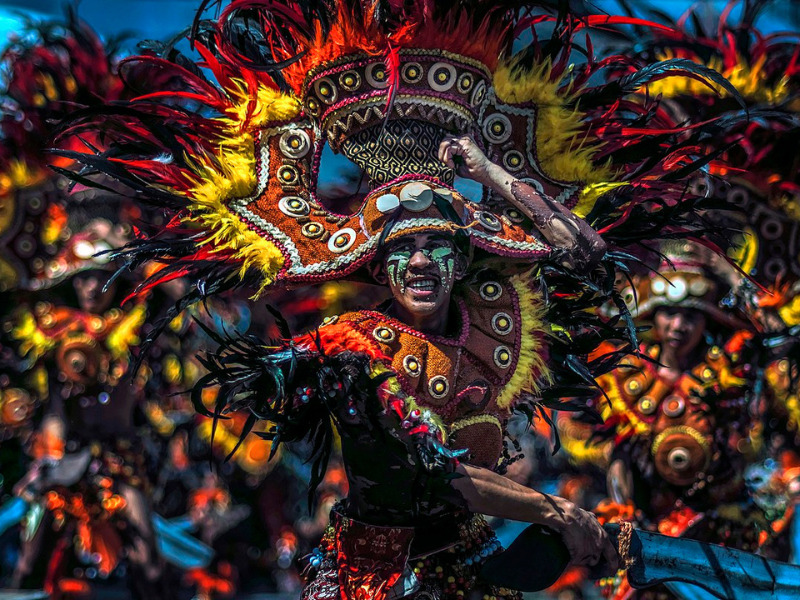
Source: Wikipedia
A Floral Extravaganza
Although primarily held in February, the preparations for the Panagbenga Festival begin as early as January. Known as the “Flower Festival,” Panagbenga takes place in Baguio City, a highland paradise famous for its cooler climate and vibrant flowers. The festival celebrates the beauty of Baguio’s flora and features spectacular flower floats, street dancing, and other festivities.
Key Events of Panagbenga
The highlight of the festival is the grand float parade, where elaborately decorated floats made of fresh flowers traverse the streets of Baguio. In addition to the parade, you’ll find flower exhibits, street dancing performances, and a wide variety of cultural activities that showcase the artistry and creativity of the locals.
Why You Shouldn’t Miss It
If you love flowers and nature, this is the perfect festival for you. The city transforms into a stunning, fragrant landscape, and you’ll get to witness the ingenuity of the artists who craft these breathtaking floral floats.
Religious Significance
January in Manila sees the grand celebration of the Feast of the Black Nazarene, one of the most important religious events in the Philippines. The Black Nazarene is a life-sized statue of Jesus Christ, believed by many to have miraculous powers. Every year, millions of devotees gather to celebrate this feast with fervor, faith, and devotion.
The Procession and Its Meaning
The highlight of the Feast of the Black Nazarene is the “Traslacion,” a massive procession where the statue is carried through the streets of Quiapo by thousands of devotees, many of whom walk barefoot as a sign of penance. The procession is both an expression of faith and a testament to the devotion of the Filipino people.
How to Participate
If you’re visiting during this time, it’s important to be prepared for large crowds. It’s a truly humbling experience to witness the devotion and faith of the participants, but it can be overwhelming, so plan accordingly.
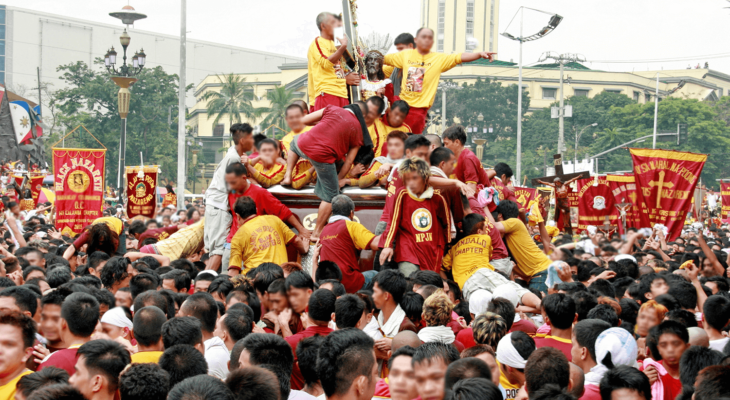
Image Source: Tony Magdaraog / Shutterstock.com
Origin and MeaningThe Iloilo Dinagyang Festival in Iloilo City is a colorful and spirited celebration that commemorates the arrival of the Malay settlers in Panay Island and the conversion of the indigenous Ati people to Christianity. The festival is known for its intense street dancing, drumming, and elaborate costumes, and it has a strong presence on social media platforms like Facebook, fostering community interaction and promotion.
Fun Activities During DinagyangDinagyang is known for its spectacular street dances, where dancers perform to the beat of drums and wear colorful, feathered costumes. The grand street dancing competition is the highlight, but the entire city becomes a celebration zone, with food stalls, musical performances, and cultural exhibits to explore. The festival is celebrated on the fourth Sunday of January, adding to its vibrant and festive atmosphere.
Celebrating Misamis Oriental’s Rich Heritage
The Kuyamis Festival is an annual celebration held in the province of Misamis Oriental, Philippines. Known for its vibrant activities and cultural significance, the festival has gained popularity for showcasing the rich traditions, natural beauty, and thriving coconut industry of the region. Held every January, Kuyamis brings together locals and tourists to revel in the unique charm of Misamis Oriental.
Kuyamis Street Dancing Competition
One of the main attractions of the festival is the street dancing competition. Participants from different municipalities dress in colorful costumes inspired by coconuts and other local elements. They perform energetic and creative dances to the rhythm of traditional music, showcasing the artistic spirit of the province.
Why Visit the Kuyamis Festival?
The Kuyamis Festival is more than just a celebration; it’s an immersive experience into the culture, history, and natural beauty of Misamis Oriental. Whether you’re a foodie looking to savor coconut-inspired delicacies, a history buff eager to learn about the province’s past, or an adventurer seeking outdoor thrills, the festival has something for everyone.
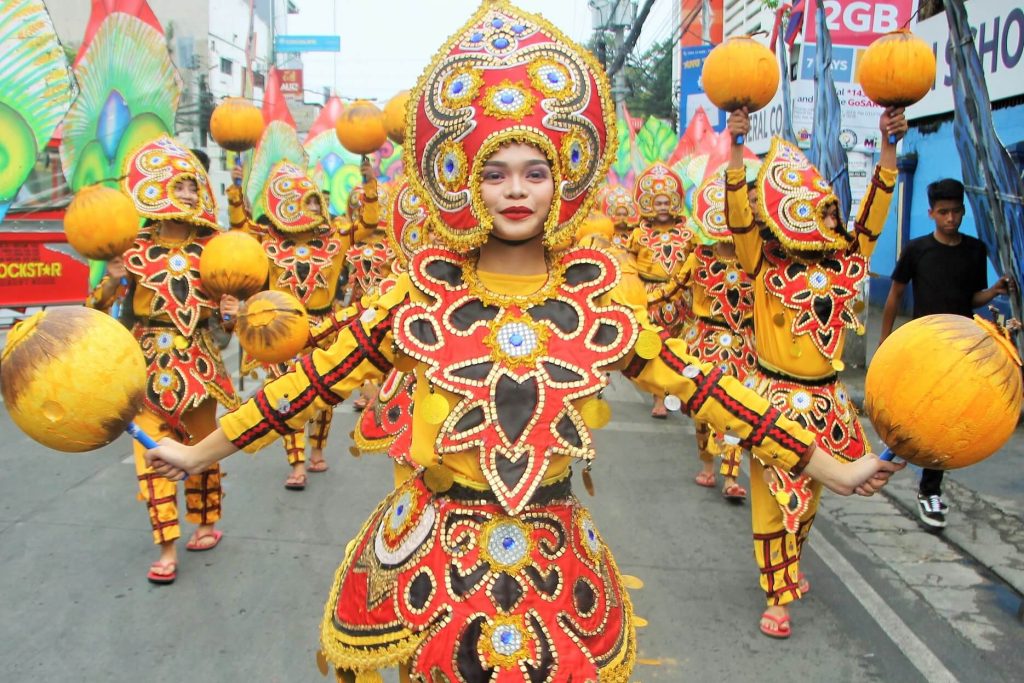
Image Source: https://opolmisor.gov.ph/ | Opol Miduyog sa 6th Kuyamis Festival | https://opolmisor.gov.ph/2019/01/11/opol-miduyog-sa-6th-kuyamis-festival/
A Vibrant Celebration of Devotion and Culture
The Diyandi Festival, held annually in Iligan City, Philippines, is a month-long celebration of culture, history, and faith. Known for its energetic street dances, colorful parades, and religious devotion, the festival honors St. Michael the Archangel, the city’s patron saint. “Diyandi” comes from the Cebuano word meaning “to celebrate,” and the festival is a true reflection of the lively and diverse traditions of Iligan.
Pagkanaug and Procession of St. Michael
The Pagkanaug is a revered religious ritual where the image of St. Michael is taken from its altar and paraded through the city. This event marks the start of the festivities and reflects the deep faith of the Iliganons. The procession is accompanied by prayers, hymns, and the lighting of candles.
Religious Significance
St. Michael the Archangel is deeply revered in Iligan for his role as a protector and defender. Religious activities, such as novenas, Holy Masses, and the grand procession on September 29, underline the festival’s spiritual essence. Pilgrims from nearby provinces often travel to Iligan to join in the celebrations, making it a time of reflection, prayer, and unity.
Attending a festival in the Philippines is an experience like no other. The energy is electric, the colors are vibrant, and the music is infectious. Whether you’re watching the Sinulog Grand Parade in Cebu City or dancing in the streets during the Masskara Festival in Bacolod City, you’ll be surrounded by the sights and sounds of Filipino culture. Many festivals also offer a range of activities, from street fairs to cultural performances, so there’s always something to do. And with the warm hospitality of the Filipino people, you’ll feel right at home.
The festivals in the Philippines are more than just a celebration – they’re a way of life. Many festivals are rooted in Christianity, dating back to the Spanish colonial period, and are a way of honoring the local Roman Catholic patron saint. Others are a celebration of the country’s rich cultural heritage, showcasing traditional dances, music, and costumes. The festivals also play an important role in promoting community products and celebrating a bountiful harvest. Whether you’re interested in history, culture, or just want to experience the Filipino spirit, the festivals are a great way to do so.
If you’re planning to attend a festival in the Philippines, here are a few practical tips to keep in mind. First, plan ahead and book your accommodations and tour packages in advance, especially during peak festival season. Second, wear comfortable clothes and footwear, as you’ll likely be doing a lot of walking and dancing. Third, stay hydrated and bring sunblock, as the sun can be strong during the day. Finally, be patient and enjoy the festive atmosphere – the festivals can get crowded, but the energy is always electric.
Getting to the Philippines is relatively easy, with many international flights arriving in Manila, the capital city. From there, you can take domestic flights or buses to get to the different festival locations. Cebu City, for example, is a major hub for the Sinulog Festival, and is easily accessible by plane or bus. Iloilo City, on the other hand, is a bit further away, but is still accessible by plane or bus. Once you arrive at the festival location, getting around is relatively easy, with many taxis and jeepneys available. You can also walk or take a tricycle to get around, depending on the location.
Filipino festivals are a reflection of the country’s vibrant culture, blending faith, history, and community spirit in colorful, energetic celebrations. January 2025 brings with it some of the best festivals to attend, each offering a unique experience. Whether you’re drawn to the religious devotion of the Feast of the Black Nazarene, the street dances of Sinulog and Dinagyang, or the vibrant floats of Panagbenga, there’s something for everyone to enjoy. These festivals are not just events—they are an invitation to dive deep into the heart of Filipino culture and tradition.
Does your home feel like it’s bursting at the seams with stuff? You’re not alone. In 2025, many of us are striving for simpler, more organized lives. The 7-Day Decluttering Challenge is here to help you transform your home, one day at a time. Let’s dive into this step-by-step guide to reclaim your space and sanity.
Living in a cluttered environment can feel overwhelming. Studies show that a tidy space reduces stress and boosts mental clarity. Imagine waking up to a home that feels like a breath of fresh air—sounds dreamy, right?
Extending these decluttering efforts to other rooms in your home can further enhance these psychological benefits, creating a more peaceful and functional environment throughout.
A cluttered home often leads to a cluttered mind. Decluttering clears not just your space but also your thoughts, helping you focus and get more done.
2025 is all about sustainability. Decluttering doesn’t mean throwing everything in the trash—it’s about responsibly donating, recycling, and repurposing items you no longer need.
Before diving in, set realistic goals. Decluttering can feel like a big task, so it’s important to set realistic goals. Do you want a cleaner kitchen, an organized closet, or just a more peaceful environment? Write down your intentions to keep yourself on track.
Grab boxes for donations, trash bags, and storage bins. Make sure to have a trash bag on hand for quick decisions on what to throw away. A label maker can be a game-changer for organizing small items.
Decluttering is as much mental as it is physical. Commit to letting go of items that no longer serve you. Remember, it’s about progress, not perfection.
Approaching the decluttering process with a structured and time-bound plan can help you stay focused and motivated.

Your entryway is the first thing you see when you come home.
The heart of your home deserves attention.
Turn your living room into a relaxing haven.
A clutter-free bedroom can improve your sleep.
Even small bathrooms can shine.
Conquer the garage, attic, or basement.
Wrap up your week with these final steps.

Take before-and-after photos to celebrate your wins. Seeing the transformation is incredibly motivating!
Treat yourself to something small, like a favorite snack or a relaxing bath, after completing each day’s tasks.
Consistency is key. Schedule regular decluttering sessions to keep your home tidy year-round.
Maintaining a clutter-free home can be easier if you focus on one drawer or shelf at a time during your regular decluttering sessions.
Adopting a minimalist mindset can help you focus on what truly matters, saving you time, energy, and money.
Ever feel overwhelmed by the sheer amount of stuff you own? You’re not alone. Clutter can sneak up on us, turning our once-organized spaces into chaotic messes. Enter the 5-year rule—a simple yet powerful method to declutter your life and reclaim your space.
The 5-year rule is simple: If you haven’t used an item in the past five years and don’t see yourself using it in the next five, it’s time to let it go.
How It Works
By setting a clear criterion, the 5-year rule eliminates the mental gymnastics of deciding what to keep and what to toss.
The rule nudges you towards owning only what truly serves you, fostering a minimalist approach to life.

Have you ever looked around your home and thought, “Where do I even begin?” If so, you’re not alone. Many of us face the same challenge. Enter the 12 12 12 Decluttering Rule, a simple yet powerful method to regain control over your space.
The 12 12 12 Rule was popularized by renowned decluttering experts and embraced by minimalists worldwide. Its simplicity appeals to those who feel paralyzed by clutter but want a straightforward solution.
Unlike more rigid decluttering methods, the 12 12 12 Rule is flexible and adaptable. It doesn’t require hours of sorting or painful decisions all at once, making it ideal for beginners and busy individuals alike.
Look around your home and select 12 items that you no longer use but could benefit someone else. This might include clothes, books, or kitchen gadgets.
Next, identify 12 items that are broken, expired, or simply no longer useful. These go straight into the trash or recycling bin.
Finally, pick 12 items that are out of place. It could be that sweater lying on the couch or a mug sitting on your nightstand. Put them back where they belong.
The rule breaks decluttering into manageable chunks, making it feel less daunting.
You only need to make three types of decisions, keeping your brain from feeling overloaded.
With 36 items dealt with in one session, you’ll see a noticeable difference right away.
A clutter-free environment leads to a clearer mind and less stress.
Focus on a single area, like the living room or kitchen, to avoid feeling overwhelmed.
Make it a fun activity by involving kids and partners. Turn it into a game to see who can complete their 12 items first.
Use the 12 12 12 Rule weekly or monthly to maintain a clutter-free home.
Need to declutter a smaller space? Try a 5-5-5 approach. For larger tasks, double up to 24 items per category.
Decluttering isn’t just about tidying up—it’s about creating a space where you can thrive. By following this 7-day challenge, you’ll not only transform your home but also set the stage for a more peaceful and productive life. If you find the process too overwhelming, consider hiring a professional organizer to help you achieve your decluttering goals.
Your journey towards owning your house or condominium starts here!
Click on the button on the right and start browsing our properties!